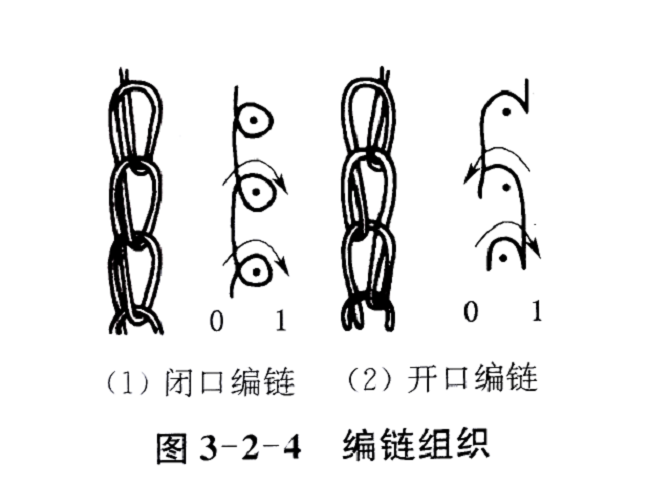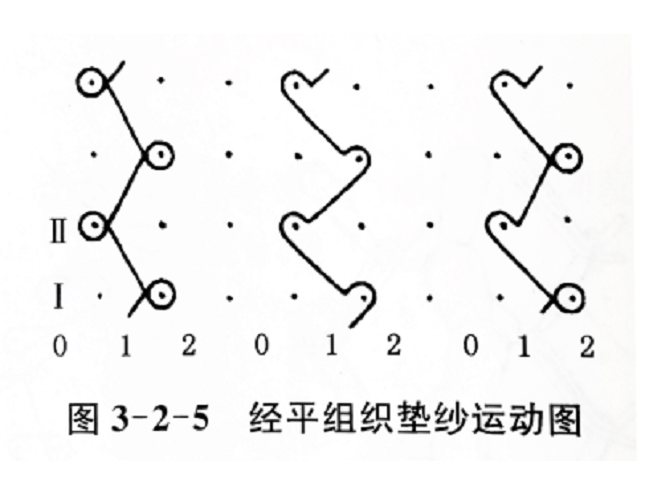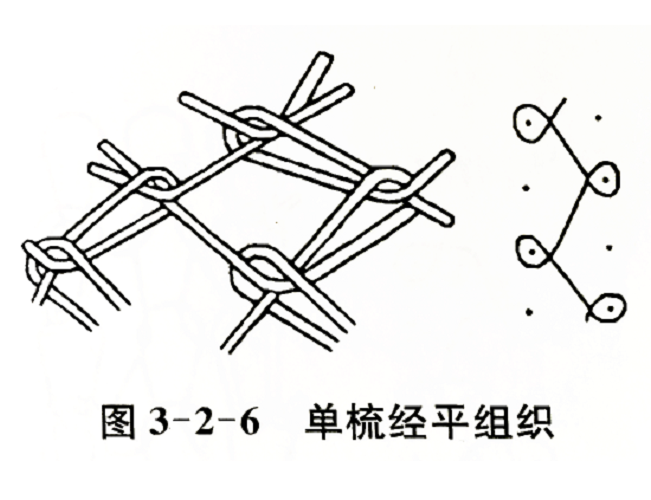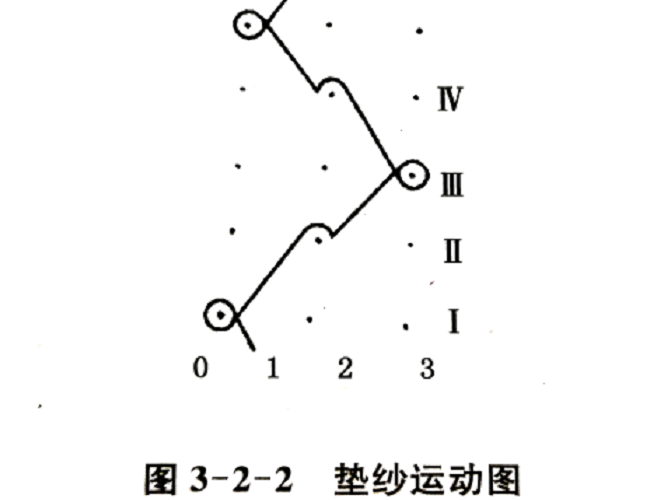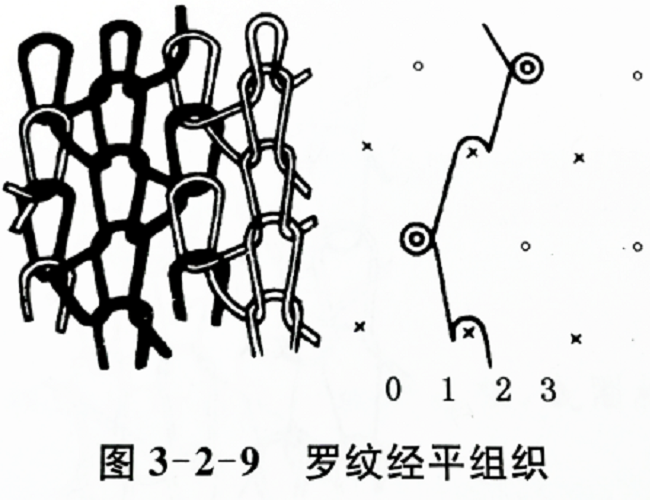The weave in which each yarn is always placed in a loop on the same needle is called a chain weave.
Due to the different yarn laying methods, it can be divided into closed braiding and open braiding, as shown in Figure 3-2-4 (1) (2) respectively.
There is no connection between the wales of the stitches of the braided chain organization, and it can only be woven into a strip shape, so it cannot be used alone. Generally, it is combined with other organizations to form a warp knitted fabric. If the braided weave is used locally in warp knitting, since there is no horizontal connection between adjacent wales to form eyelets, the braided weave is one of the basic methods for forming eyelets. The longitudinal extensibility of the braided organization is small, and its extensibility mainly depends on the elasticity of the yarn.
The weave in which each yarn is laid on two adjacent needles in turn to form a circle is called warp flat weave, as shown in Figure 3-2-5.
The coils forming the warp tissue can be closed or open, or a mixture of closed and open, and the two horizontal lines are a complete tissue.
All the stitches in the flat weave have unidirectional extension lines, that is, the lead-in extension line and the outgoing extension line of the coil are on one side of the coil, and the curved yarn at the connection between the coil trunk and the extension line is due to the elasticity of the yarn. Try to straighten it out, so that the coils are inclined in the opposite direction of the extension line, so that the coils are arranged in a zigzag shape. The inclination of the loop increases with yarn elasticity and fabric density. In addition, the extension line passing through the loop of the coil presses one side of the main body of the coil, so that the coil turns into a plane perpendicular to the fabric, so that the appearance of the grey fabric is similar on both sides, but the curling property is greatly reduced, as shown in Figure 3-2- 6 shown.
The weave formed by laying each yarn sequentially on three or more knitting needles into a circle is called a warp satin weave.
When weaving this kind of weave, the bar is progressively laid in the same direction in at least three consecutive courses, and then alternately laid in the opposite direction. The number, direction and sequence of traversing needles in a complete weave are determined by the pattern requirements. Figure 3-2-2 shows a simple warp satin weave.
The rib warp-flat weave is a double-sided weave knitted on a double-needle-bed warp knitting machine. The knitting needles of the front and rear needle beds are staggered during knitting. . The structure of rib warp flat organization is shown in Figure 3-2-9.
The appearance of rib warp and flat weave is similar to that of weft knitted rib weave, but its lateral extension performance is not as good as the latter due to the existence of extension threads.
Post time: Oct-27-2022

